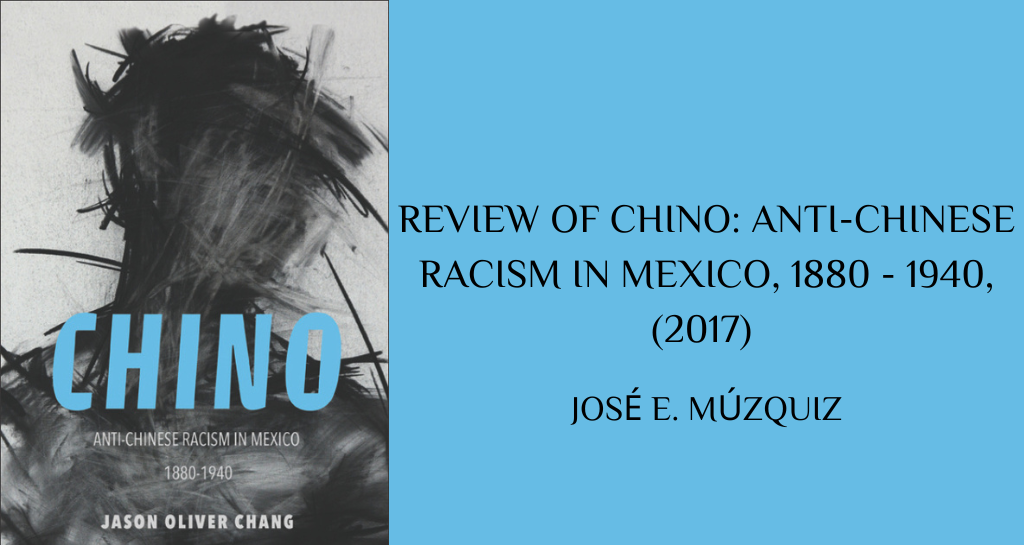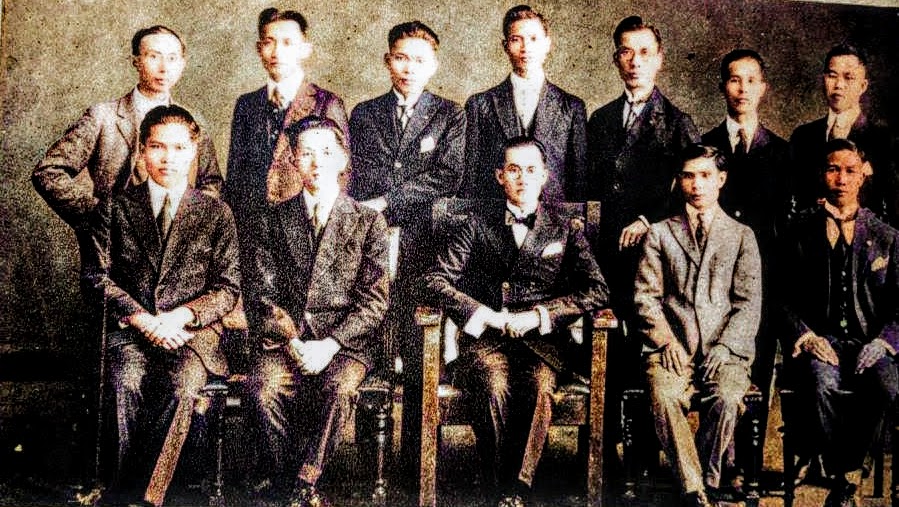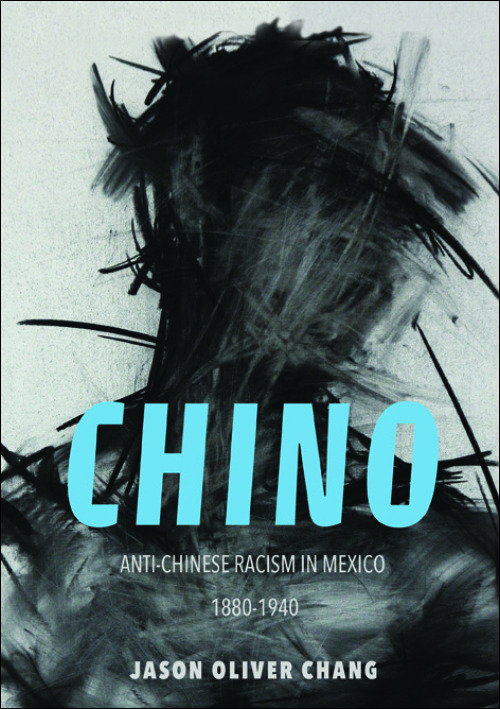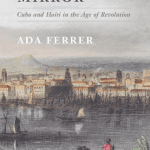
Studies on racial systems in Mexico have often explored the myth of mestizaje or the continued oppression of Indigenous people even after the abolition of institutionalized racism. In Chino: Anti-Chinese Racism in Mexico, Jason Oliver Chang directs our attention towards the “other” that delimits the borders of the unstable pact of Mexicanity. Chinese people — both Chinese-Mexican and foreign born — represent the “them” that demarcates the emerging Mexican “nosotros” or “us”. It is this delineation, in Chang’s telling, which supports the incorporation of Indigenous people into the nation, as well as other biopolitical projects of the state. This review of Chino highlights how Chang’s work reframes discussions of race and national identity in Mexico.
Chang’s proposition is novel: he offers an important Asian Americanist perspective on the role of anti-Chinese action and discourse in the construction of postrevolutionary Mexican nationalism. The responsibility lies with racial systems and the historical processes of nation-building. But the author is clear in stating that the experience of the Chinese in Mexico is not an importation of the xenophobia of the United States, but rather a unique historical racialization process. It responds to evolving economic and social realities during Mexico’s Porfirian, revolutionary, and postrevolutionary periods.
In the first part of the book, Chang explains how Chinese immigration to Mexico commenced in response to the openness of the Porfirian regime to foreign investment, paired with the U.S. Chinese Exclusion Act of 1882, which forbade Chinese people from entering the country. While some migrants came from the U.S. to Mexico, many moved directly from China, as proven by recruitment advertisements in Canton for workers to come to Mexicali that Chang discovered during archival research. Additionally, other Chinese people arrived in Yucatán after escaping Caribbean plantations where they had been indentured servants.

Source: Wikimedia Commons
In areas where Indigenous people resisted Mexican colonization, such as Sonora and Yucatán, investors, with government acquiescence, brought Chinese workers under fraudulent contracts to work as semi-enslaved laborers, particularly for railroad and agricultural projects. After they completed these contracts, many Chinese immigrants stayed, married Indigenous women and started businesses, especially grocery stores, taking advantage of their far-flung commercial networks.
To the industrialists exploiting their labor, they were but “motores de sangre”—racialized as docile and durable blood engines that would not rebel like the Yaquis or Mayas. To the locals, they were agents of the oligarchy brought to break their strikes and dampen their spirit by replacing Mexican peasants and proletarians in the fields and train tracks. Further, the Porfirian regime set up a colonization program that gave companies one third of the land they mapped. This incentivized U.S. investors to settle places like the Mexicali Valley by employing Chinese laborers, leasing the land to them in exchange for improvements such as fencing and irrigation infrastructure. This all changed when the revolution began.
In the second section, the book delves into the chaos of the Mexican Revolution and the explosion of anti-Chinese violence in many locations across the country, including Nacozari, Sonora, Tapachula, Chiapas and the infamous massacre in Torreon, Coahuila. According to Chang, this last event remains the largest act of anti-Chinese violence in the western hemisphere. His meticulous recounting of the Torreon massacre is one of the most gripping sections of the book. A key aspect of his telling is that it was the townsfolk, rather than the revolutionaries, who inflicted most of the violence. The author shows us how this and other acts of radical othering through annihilation mask the ongoing social and racial injustices embedded within the mestizo pact. As the author eloquently puts it: “anti-Chinese violence ushered into being new political subjectivities” (p.108)

An organized political movement emerged from this explosion of violence. Anti-Chinese ideology became institutionalized as part of the budding revolutionary state apparatus. Anti-chinismo became a movement that held sway among Mexican elites, turning a nativist argument for expelling Chinese people from Mexico into service for the emerging mestizo nation. This movement was comparatively successful in Sonora and Sinaloa but was present in other states across the country.
While Anti-chinismo competed with other revolutionary ideologies, it stood out because it claimed to solve the “Indian problem” by othering the Chinese as a way to unite Mexicans. Ideologically, it centered capitalism, racism, and sexuality as key elements for the defense of the nation, all deriving from a biopolitical program of racial purity. This coincided with the objectives of the postrevolutionary state and within this context Anti-chinistas were able to stand out and score political victories. The largest of these was the presidency of Abelardo L. Rodriguez, a zealot of this deplorable cause.
After the Revolution, the constitution articulated that the goal of the state was “public good”, a concept that stands in sharp contrast with the colonial imperative. Anti-chinismo articulates “mestizo good” through economic, legal, and sexual racial protection. It places a heavy onus on women as “keepers of the race” whose virtue guards the purity of the mestizo nation. This further increased the state’s dominance over marriage in the post-revolutionary context.

Furthermore, Chang provocatively challenges the idea that Manuel Gamio and Jose Vasconcelos were key players in the creation of Mestizo nationalism, as they were both absent from Mexico during the crucial decade of the 1930s. He argues that narratives focusing on their ideas of cosmic race and the assimilation of Indian people, shift the emphasis away from the importance of Anti-chinismo, which was able to garner actual political power at both the state and federal level. Just as Chinese people’s work depended on regional conditions, Anti-chinismo also served different functions depending on the context. In Sonora, it distracted from the Yaqui Genocide. In Baja California, it supported land distribution. In Yucatán and Tamaulipas, expulsions of Chinese were used to calm peasants that were not given land. In Oaxaca and Tlaxcala, states with virtually no Chinese residents, symbolic expulsions helped local elites claim credit for defending the mestizo race.
Chang also analyzes the Chinese diaspora in its complexity with pages dedicated to the conflict between the Chee Kuo Ton and the Kuomintang, two rival Chinese fraternal organizations in Mexico. The intrigues of this dispute included denouncing each other to immigration authorities and conspiring with the Mexican government for protection. They scapegoated each other with narratives of “good” and “bad” Chinese, claiming they were the former and their rival the latter. This fight also gave fuel to Anti-chinista ideology, because it helped them paint the Chinese as violent and combative. After this confrontation escalated to a shootout in the streets of Hermosillo, Sonora passed laws allowing for the segregation of Chinese people and prohibiting intermarriage. But these laws applied only in cities, allowing for undisrupted colonization of Yaqui land.
This is a prime example of the tendency of the selective application of anti-Chinese laws in Mexico. Where it served the state, Chinese migrants were allowed to live— to plow otherwise deserted fields, and to provide vital groceries through their fraternal supply chains in remote areas — and harassed where it did not.
The final section of the book focuses on the Governor of Baja California Norte and then President Abelardo L. Rodriguez, who used a tripartite strategy to oppress the Chinese in Baja California: taxes to profit off them, casinos to feed into negative stereotypes (and profit off them), and deportation of leaders to weaken their ability to resist.
When Rodriguez became president, Anti-chinismo spread from the capital to the rest of the country, completing its transformation from vigilante violence to a state sponsored crusade. It was coupled with the import substitution model, the institutionalization of eugenics in labor laws, the revamping of the census and the opening of a foreigner registry, all elements that served the state in its project of control of immigrants and construction of the nation.

Despite the important and generally persuasive arguments presented in the book, Chang’s lack of attention to the Spanish spelling of names is unfortunate. The frequent mistakes distract from the main argument and, more importantly, make the reader question if the manuscript was reviewed by a Mexicanist scholar. These include the names of characters and publications, where Rudolfo stands for Rodolfo and “La Economista Mexicana” for “El Economista Mexicano”. While I won’t list them all here, there are enough to warrant attention, and possible correction down the line.
Overall, the book is a well researched and novel approach to an understudied subject. The Asian Americanist perspective brings a much-needed change of lens to the study of sinophobia in Mexico, highlighting its key role in the construction of post-revolutionary nationalism. Succinctly put: “Anti-chinismo gave millions of nonwhite people permission to enact a state-endorsed identity of racial superiority” (P. 187). This key element of the racial pact in Mexico is the great contribution of the book to our knowledge on Mexican nationalism.
José E. Múzquiz is a PhD Candidate in Political Science and International Relations at the University of Southern California. He also holds a Master’s Degree in Cultural Studies from El Colegio de la Frontera Norte. His research interests are Borderlands History, Hispanic Republicans in the United States, Mexican immigration to the US and racism in Mexico.
The views and opinions expressed in this article or video are those of the individual author(s) or presenter(s) and do not necessarily reflect the policy or views of the editors at Not Even Past, the UT Department of History, the University of Texas at Austin, or the UT System Board of Regents. Not Even Past is an online public history magazine rather than a peer-reviewed academic journal. While we make efforts to ensure that factual information in articles was obtained from reliable sources, Not Even Past is not responsible for any errors or omissions.



